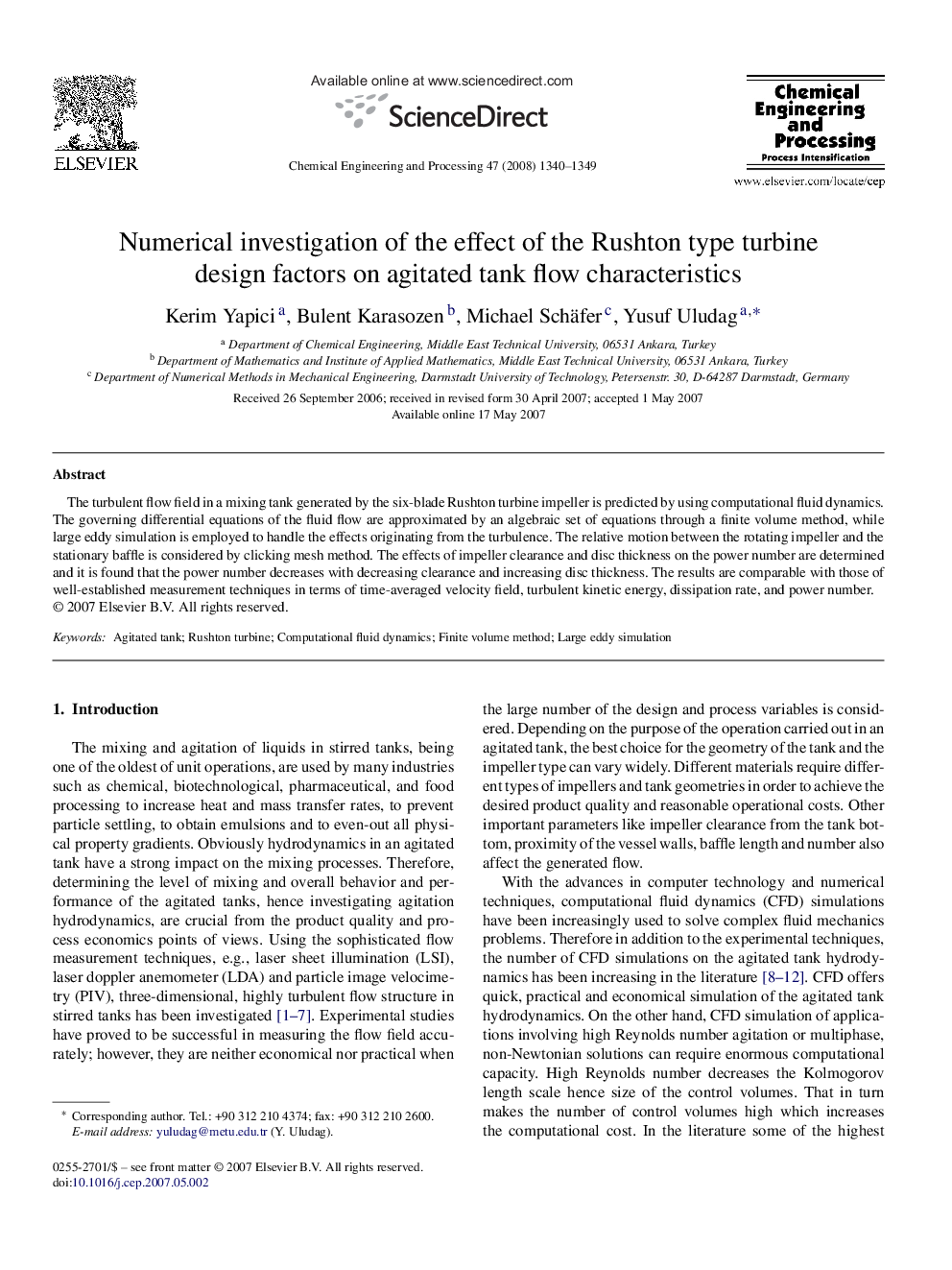| Article ID | Journal | Published Year | Pages | File Type |
|---|---|---|---|---|
| 688097 | Chemical Engineering and Processing: Process Intensification | 2008 | 10 Pages |
Abstract
The turbulent flow field in a mixing tank generated by the six-blade Rushton turbine impeller is predicted by using computational fluid dynamics. The governing differential equations of the fluid flow are approximated by an algebraic set of equations through a finite volume method, while large eddy simulation is employed to handle the effects originating from the turbulence. The relative motion between the rotating impeller and the stationary baffle is considered by clicking mesh method. The effects of impeller clearance and disc thickness on the power number are determined and it is found that the power number decreases with decreasing clearance and increasing disc thickness. The results are comparable with those of well-established measurement techniques in terms of time-averaged velocity field, turbulent kinetic energy, dissipation rate, and power number.
Keywords
Related Topics
Physical Sciences and Engineering
Chemical Engineering
Process Chemistry and Technology
Authors
Kerim Yapici, Bulent Karasozen, Michael Schäfer, Yusuf Uludag,
